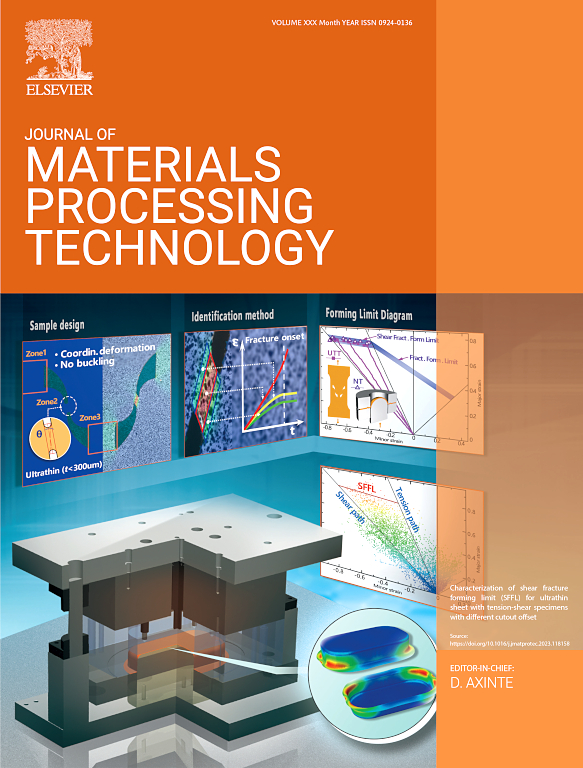Laser efficient truing and rotary precision dressing of concave-surface coarse-grained diamond grinding tools
IF 6.7
2区 材料科学
Q1 ENGINEERING, INDUSTRIAL
Journal of Materials Processing Technology
Pub Date : 2025-01-09
DOI:10.1016/j.jmatprotec.2025.118726
引用次数: 0
Abstract
This study addresses the challenges associated with internal dimension and profile accuracy in the profiling of concave-surface coarse-grained diamond grinding tools, with a particular focus on solving the problems of thermal damage during laser truing and the significant wear and inefficiency associated with rotary dressing. A novel combination method of non-deflection laser rough truing, deflection laser semi-precision truing and rotary precision dressing was proposed. A mathematical model for deflection laser truing has been established for the first time, which is crucial for understanding and optimizing the truing process. Utilizing a grinding wheel intended for oil pipeline cutting tools as a test case, a combination experiment of laser truing and rotary dressing was conducted. The material removal and wear mechanisms were thoroughly investigated. The findings indicate that the thickness of the diamond’s graphite layer and the thermal damage layer of the bronze bond is less than 5 µm under the specified laser truing parameters, according to the analysis of the surface and subsurface materials. And rotary dressing effectively removes the thermal damage layer and the graphite layer when adjusted to varying dressing depths. The mathematical model confirms that the deflection laser is effective in compensating the power density loss caused by the contour changes of the grinding wheel. The combination experiment demonstrates that the laser can achieve a controlled material allowance of approximately 10 µm. The thermal damage on the wheel can be eliminated by a rotary dressing allowance of 10 µm. The combination method of laser truing and rotary dressing significantly minimizes tool wear and offers substantial advantages in terms of truing efficiency and dressing accuracy.
求助全文
约1分钟内获得全文
求助全文
来源期刊

Journal of Materials Processing Technology
工程技术-材料科学:综合
CiteScore
12.60
自引率
4.80%
发文量
403
审稿时长
29 days
期刊介绍:
The Journal of Materials Processing Technology covers the processing techniques used in manufacturing components from metals and other materials. The journal aims to publish full research papers of original, significant and rigorous work and so to contribute to increased production efficiency and improved component performance.
Areas of interest to the journal include:
• Casting, forming and machining
• Additive processing and joining technologies
• The evolution of material properties under the specific conditions met in manufacturing processes
• Surface engineering when it relates specifically to a manufacturing process
• Design and behavior of equipment and tools.
 求助内容:
求助内容: 应助结果提醒方式:
应助结果提醒方式:


